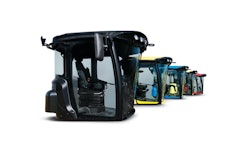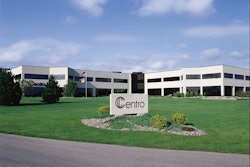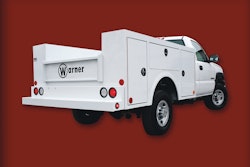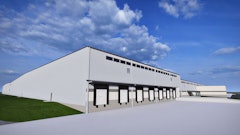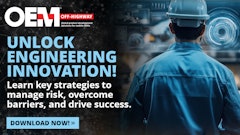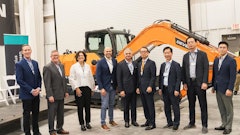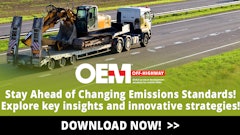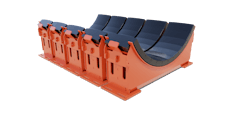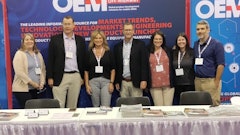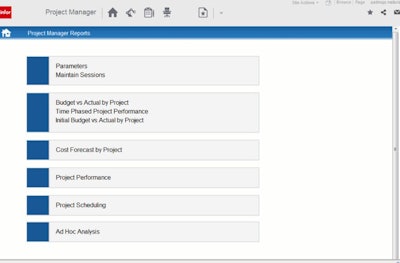
The heavy-duty on- and off-road vehicle manufacturing processes have become more aligned than they were in the past. Custom-built vehicle systems uniquely styled and programmed for each individual user means that the same two dozers or Class 8 trucks at the beginning of the manufacturing process can end up quite different by the end of the line. The features available on vehicles are growing tremendously, so the ability for an OEM to quickly adapt a vehicle’s design to deliver the completed product in a timely fashion is both a challenge and a focus for optimizing the manufacturing process.
“Each customer wants his equipment to run and perform a specific set of tasks that best aligns with the company’s overall business practices. They want to be able to run the machine, maintain it, and preserve the life of the equipment,” says Warren Smith, Global Director for Automotive at Infor. A more controlled assembly process allows dealers to configure vehicles to order while the number of options and features continue to grow. “For the OEM, this brings to light complications not only with delivering a vehicle quickly and with all of the correct features, but also an accurate pricing model for each unique vehicle configuration, as well as having the appropriate materials delivered to the manufacturing line at the right time—minutes before it’s needed, not hours. That’s all part of what I refer to as the Assembly Controls Sequencing Process,” Smith says.
The military vehicle industry has an even greater number of specifications and requirements to be met than typical on- and off-road vehicles during the design control and approval process. Examples such as ITAR (International Traffic in Arms Regulations) requirements for security and DPAS (Defense Priorities Allocations System) must be able to be met if an OEM is to be a military contractor. “There are OEMs that have bridged the gap between the commercial manufacturing process and military by using Infor’s industry-specific suites that overlay our core platform program to capitalize on commercial mass-production best-practices.”
DPAS is an important requirement for all military suppliers which allows orders to be declared high priority. There are tools in Infor’s software to make sure that prioritization happens and ensures the OEM is able to stay in compliance with the government requirements of security and process capabilities. “That is why we separate out our military suite from commercial, but it’s not separated enough that it becomes disjointed from lean production methodologies, which is where the military industry is heading,” says Smith. Budget cuts have forced military manufacturers to evaluate the commercial manufacturing model and source more efficient organizations that have succeeded in the commercial world.
More technology brings more challenges and smarter solutions
As commercial vehicles have continued to add enhanced technologies, electronics and softwares on-board such as engine control computers, anti-roll devices and GPS systems for control assistance and automation, the manufacturer has had more to juggle than ever before. Now a manufacturer that has traditionally been successful at machining, assembly and engineering processes is being challenged to become a software integrator to apply system characteristics to a vehicle unique to the customer as the vehicle rolls down the assembly line.
“Because we [at Infor] are industry specific, we have experts that build the individual suites for the specific requirements for the manufacturing process. So, for example, as a military vehicle reaches a particular point on an assembly line that requires a certain form, it will print at that time with the information filled in,” Smith explains.
Infor ERP (Enterprise Resource Planning) LN aids the OEM in managing the complex demands of global manufacturing operations while helping to increase response time and reduce costs. The ERP LN core platform can then be layered with an industry-specific suite containing the specialized set of functionalities necessary to participate in the market.
The layered suite is connected through Infor’s ION (intelligent open network). “If a company is heavy on configuration, our product configurator—which is the system that is typically found in a dealer environment—can connect through ION to access the same master data and get costing information and supplier and component availability in real-time. It can then overlay it with industry specific information like military finance, and now all of the financials meet the military’s requirements but the broad-based core data is being drawn from the same general ERP platform,” Smith says. “We’ve made sure the industry specific suites do not bloat our core ERP by identifying core processes that are fundamental to manufacturing.”
What manufacturing management software is becoming is more of a collaborative engineering system where people involved in different parts of the cradle to grave lifespan of a vehicle can access the information they need while being in tune with the entire vehicle. This transparency is essential to the growing individuality of vehicles. Whether an OEM is manufacturing a dozer or a Class 8 truck, each component and system can be customized to the specific needs of the customer, so equipment volume is quickly becoming obsolete for evaluating manufacturing efficiency.
Another challenge OEMs are facing is the globalization of component suppliers. Vehicles at one point in time were manufactured in one country. Now, as supply changes grow in complexity, one component may be sourced in Brazil, another in China and another in Germany just to make one vehicle configuration. The ability to control the sourcing and have knowledge of the entire vehicle’s sourcing through the supply chain helps an OEM to understand if there are complications with a part and offers traceability.
Lack of skilled labor addressed
The challenge to find skilled labor for not only the design and manufacturing process but also the service side in post-vehicle sales and rental can also be addressed through shared business modeling software. “Dealers are having trouble finding people are interested in going into the business, are able to work on the increasingly complex equipment, and do it affordably,” says Smith.
“The Infor suite can take out of the manufacturing process the ‘as-assembled’ bill of materials so maintenance personnel know exactly which components went into the building of the machine.” The information can be transferred to the dealer portion of the software so the dealer can verify the machine is configured correctly for the customer, as well as any maintenance needs down the road, part recalls or warranty claims.
“That allows the OEM to take ownership of the full life of that vehicle as both a product supplier and as a service provider to the customer. You’re creating a reliable relationship between you and your customer for the life of the equipment,” Smith says.
Looking at what’s next
The continued advancement in telematics is helping software manufacturers to integrate geolocating capabilities as well to keep track of rental equipment. “By a rental company not knowing the exact location and status of its equipment at any given time, it is essentially putting the company at risk to not be able to fulfill guarantees to customers expecting a piece of equipment if it goes missing, is not returned on time or is damaged and sitting idle somewhere,” says Smith. To cover their bases, rental companies often have idle extra equipment just in case, which is idle money. Infor’s EAM (enterprise asset management) software can communicate with telematic devices.
As technology continues to advance, there is a double pronged affect; it allows more options and upgrades for equipment owners to have built into their vehicle’s design while at the same time creating challenges for manufacturers to juggle the customization during the vehicle’s configuration and assembly with cost effective and timely production. Software platforms for optimizing manufacturing processes that can be integrated with layers of niche industry information and post-production support can provide not only an efficient manufacturing process for streamlining customized vehicle production, but also the opportunity to be a more reliable service provider in all stages of the vehicle’s life.





